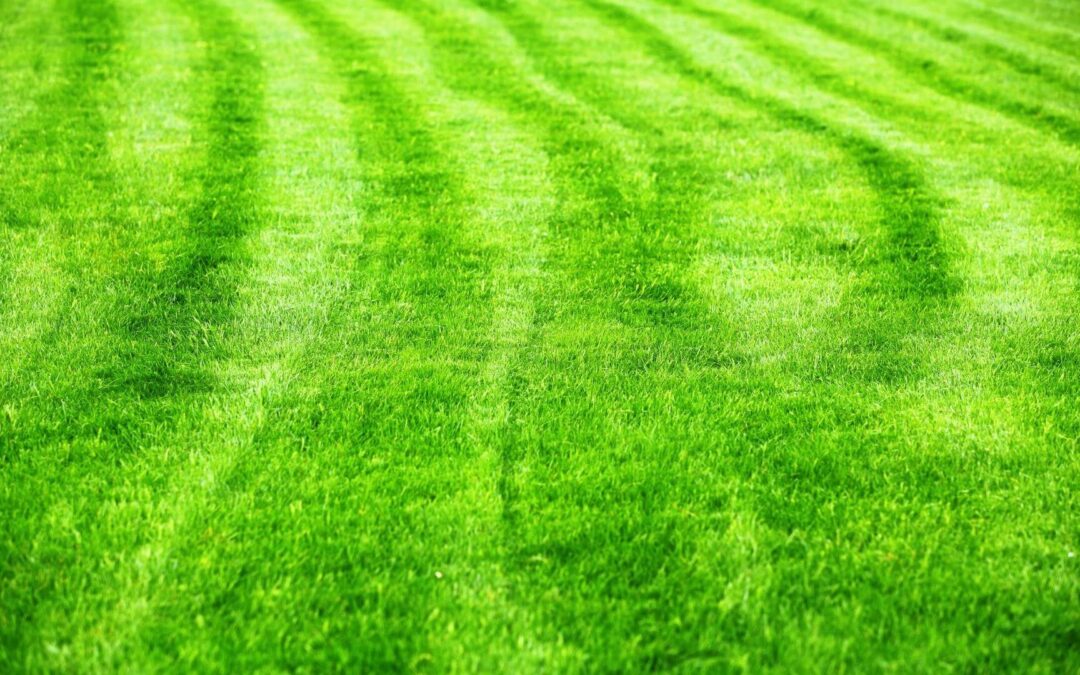There are a lot of factors that can contribute to a gorgeous, vigorous, and lush lawn. One factor that might be overdue in your yard is reseeding or overseeding your lawn. When you overseed, bald spots or thin spots that are present on your lawn will be mitigated by new grass that will grow as a product of overseeding. By reading this guide, you’ll be able to know the importance of reseeding or overseeding and how to properly do it to your lawn.
What is Overseeding?
Overseeding is when you or your lawn care professionals spread grass seed on a yard that already has existing grass. These grass seeds will germinate and grow, thickening up the grass on your lawn. It is good practice to overseed your lawn after aerating to fill in the spots that were revealed during aeration.

Why Overseed Your Lawn?
Knowing what overseeding is is just the first step. Next, we’ll tackle why it’s important to overseed your lawn to achieve the following:
- Grass will fill in the bare spots of your lawn.
- Strong grasses can help fend off lawn problems.
- Improved resistance against lawn diseases, weeds, and insect infestations.
- Improves your lawn’s appearance and color.
- You’ll have a lush lawn full of healthy grasses, the envy of the neighborhood.
Overseeding fill in the bare spots of your lawn.
Whenever you see bare or thin patches on your lawn, this indicates the need to overseed. The grass seeds that are spread will germinate. Eventually, it will take care of those patches by filling them with grass to make your lawn gorgeous again.
Strong grasses will grow that can fend off lawn problems.
If there’s high traffic on your lawn, it can easily damage and kill off your grass. But when you overseed, the grass that will grow will enable your lawn to be more resilient against foot traffic and other problems that could easily damage it.
Improved resistance against lawn diseases, weeds, and insect infestations.
As a result of overseeding, the grass in your lawn will increase in density. And when that happens, it will be a lot harder for the weeds such as crabgrass and dandelions to take root as they can’t compete with the space covered by your grass. Lawn diseases and insect infestations will also be less of a problem for you.
Improves your lawn’s appearance and color.
Finally, overseeding doesn’t only promote your lawn to consist of lush and healthy grasses. It will also improve the overall beauty of your property and become the envy of the neighborhood.
A lush lawn full of healthy grasses, the envy of the neighborhood.
We all would like to not just keep up with the Jones, but to be the Jones. Overseeding will easily thicken up the density of the grass. Making your lawn look more vigorous and much more enjoyable.

How To Overseed Your Lawn
Overseeding may seem like an easy task to do but doing just that will only cost you resources, time, and money if you didn’t prepare your lawn first. Just like every other lawn maintenance task, it is a delicate process that requires a lot of TLC. Here are the steps that you should take to have a successful overseeding plan and to welcome your new seeds to the party.
- Check your lawn for existing problems. Before everything else, part of the overseeding process is looking at thatch levels on your lawn. Dead turf can cause issues during the overseeding process as it could obstruct your new seeds from reaching the soil. In conditions that are extreme, it is advised to incorporate aeration as an initial step to prepare the soil.
- Mow your lawn lower than usual. It is crucial to mow your lawn shorter than the standard height. Mowing at about 1.5” is a great measurement for overseeding as\that height enables the seeds to get through the existing blades and reach the soil. The short mow also helps with the fact that you will want to delay mowing again for a few weeks. When you overseed, it’s best to delay mowing your lawn as it could pull out and damage the new grass. The grass roots of the new seeds aren’t strong enough to withstand your mowing.
- Bag the clippings. This one is crucial for your seeds to integrate with the soil. If clippings are left scattered on your lawn, the new seeds will have a difficult time getting in contact with the soil, so remove the clippings before overseeding.
- Rake. To make sure that your lawn is prepared to receive the new seeds, rake it to remove excess clippings and to loosen the top layer of the soil. This will expose the soil to nurture and to help germinate your new seeds when you start spreading them.
- Choose your grass seeds. Choose what grass works best in your area and what is recommended for your regional climate. For those reading this in the Treasure Valley, we love the 3 Blend Mix from Legacy Seeds in Nampa. You can also find similar options at places like D&B or Zamzows. The blended mix will give you the best chance for success with our desert soil. For those reading this elsewhere: In the North, cool-season grass seeds are best used during spring or fall to take advantage of the cooler temperatures and the soil moisture staying longer. In the South, warm-season grass seeds are ideal to be spread during late spring or early summer to take advantage of the favorable conditions.
- Spread the seeds. After mowing, raking, bagging the clippings, and choosing your seeds, your lawn is finally prepared to be seeded. Spread the seeds by using a lawn spreader. Make sure to read the label and apply the directed overseeding rates to get the best results for your lawn. It’s not rocket science, but you just don’t want to waste excess seed, or not put down enough and waste all of that extra energy.
- Use fertilizers. When you’re done spreading, apply fertilizers to help give essential nutrients to your seeds and to promote their growth.
- Keep your soil moist. Seeds on a newly overseeded lawn require constant moisture. You do not want them to be dry at any point. For the 1st week, make sure to lightly water your lawn twice a day. When your lawn is in week 2, water more heavily. After the first 2 weeks, adjust to a normal watering cycle to promote deep, healthy roots and to prevent your grass from wilting.
- Maintian a routine of lawn care. After 3 weeks have passed, you can resume doing your regular lawn care. You’re gonna notice that your seeds have sprouted and rooted. That is a good indication that the overseeding was a success and that your lawn is going to have a healthy and vigorous year ahead.
When Should You Overseed
Spring is a great time to overseed your lawn. If you’re looking for a full lawn, if you’ve experienced a year prior where you had bald spots, thin spots, areas where maybe a dog or high traffic patterns have caused the lawn to wear out and you see dirt exposed, you should really consider overseeding your lawn in the spring. The temperatures are cool enough to where you can stay on top of it relatively easily with watering and won’t face issues of it drying out like you would face mid-summer.
Overseed With a Professional in Lawn Maintenance
Having problems with bare and thin patches on your lawn? Maybe this task is a bit daunting to you. If you’re not entirely sure what to do, don’t stress out, let us assist you. Green Blades Lawn Maintenance would gladly come out and overseed your lawn. We have skilled crews in the field that can do that for you. They’re not only trained, but they’re also eager to help you out. For a free estimate, contact us.


